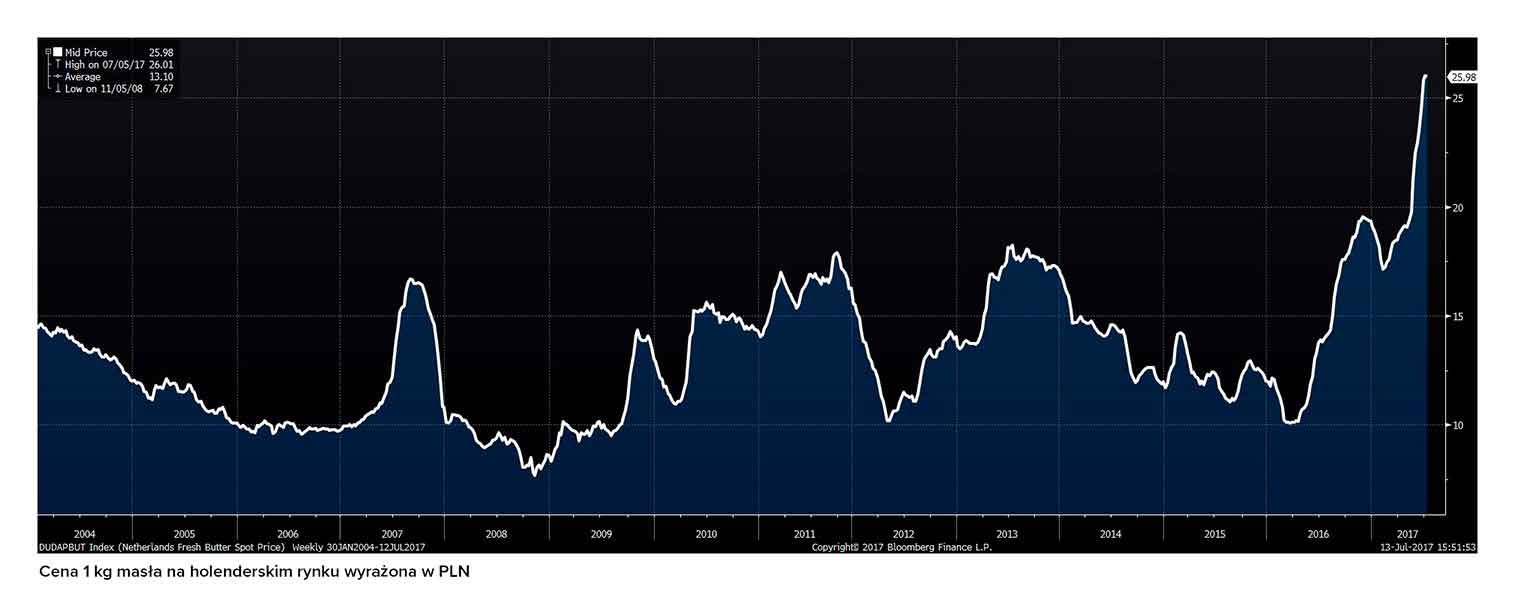Last year, the price of butter on the European wholesale market increased by more than 100 percent, including 40 percent just over the past two months. It is practically certain, that retail prices will go up in the coming weeks, and there is a chance, that in some countries there won't be enough of butter for Christmas, writes Marcin Lipka, the main analyst at Cinkciarz.pl.
According to GUS data, between the beginning of the second half of 2016 and the March 2017, retail butter prices increased by 28 percent. We also had similar situations in the other EU countries. In Germany or the Netherlands, this popular fat has risen by more than 30% in the same period.
The increase in the cost of buying butter was due to its price change on the wholesale market. From June to December 2016, butter contracts listed on the Eurex stock rose from 3 to 4.5 k euro per tonne, so 50 percent. A serious problem may be the fact, that the current prices on store shelves do not reflect another jump in the butter value on the commodity market.
Another few dozen percent in two months
At the beginning of the year, after the stabilisation of prices on the wholesale market since May, we are dealing with another very dynamic movement. A tonne of butter on Eurex fired from 4,5 to 6.3 k. euro per tonne, reaching historic highs. This represents a further increase of 40 percent, compared to the previous two months. It is also worth noting, that by converting these values into the Polish currency, we get a value of 26.5 k PLN per tonne. It also gives you 26.5 PLN per kg and 5.3 PLN for 200 gr. However, these are the values without tax, retail margin or transportation costs.
However, the dynamic growth of butter trading on the European wholesale market, for the time being, did not translate into the second wave of increases in retail price in Poland. The GUS data shows, that from April to June, the cost of purchasing this fat in stores increased only by 4% in total. This is partly due to the natural time shift between the wholesale and retail markets.
The limited consumer price growth may also be indicated due to in Poland, according to the data from the Ministry of Agriculture and Rural Development, movement in the wholesale market was not as dynamic as in Germany or the Netherlands (an increase of about 20 instead of 40%). At our western neighbour, according to June's data for Destatis, butter in stores is already more expensive by 59.5 percent. (YOY).
Taking into the account the historical dependencies of the last decade, market rates in Poland and in Western Europe were very similar. So, if the prices in the EU stay high, then we can be pretty sure, that in our country they will attain alike values.
Will there be butter on Christmas?
An anxious element for consumers can be a fact, that changes in the market concerning butter, are not a result of speculation by financial investors, but a fundamental shuffle of actual demand and supply for this product. The “Financial Times” points out that the first time in seven years, in 2016 the world's milk production dropped.
In the United States, butter consumption per person, reached its highest level this year and was over 20 percent larger than in 2010. "FT", in its analyses, also cites the concerns of one of the leading butter producers in Europe, who last week warned the British consumers that "there will be enough butter for Christmas."
At this point, of course, it is difficult to assess whether the concerns about the butter supply in the coming months will be realised. However, it is pretty certain, that the prices of this popular fat in the coming weeks will increase by at least another 20-30%, adjusting to the trends on the European wholesale market.


